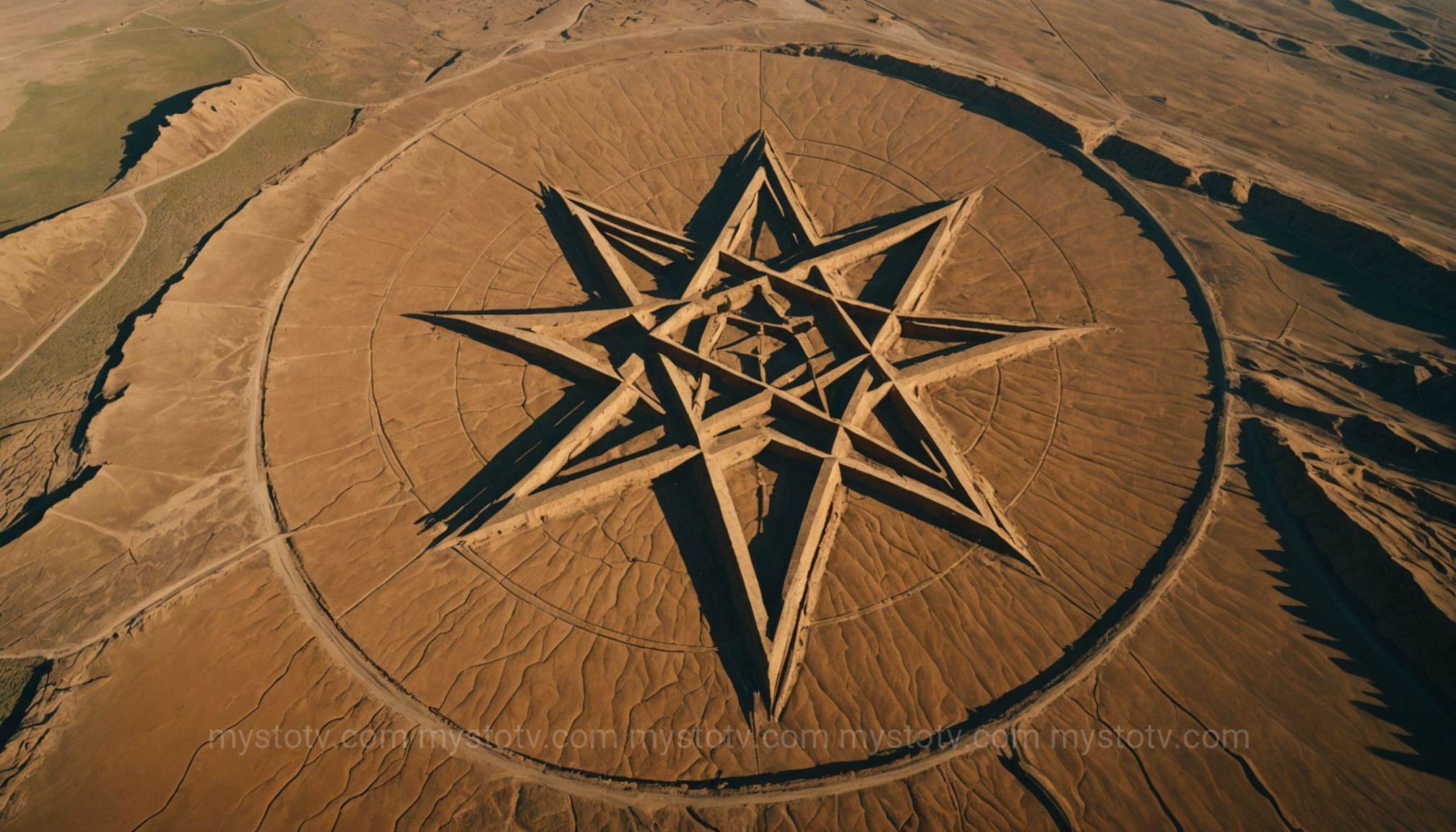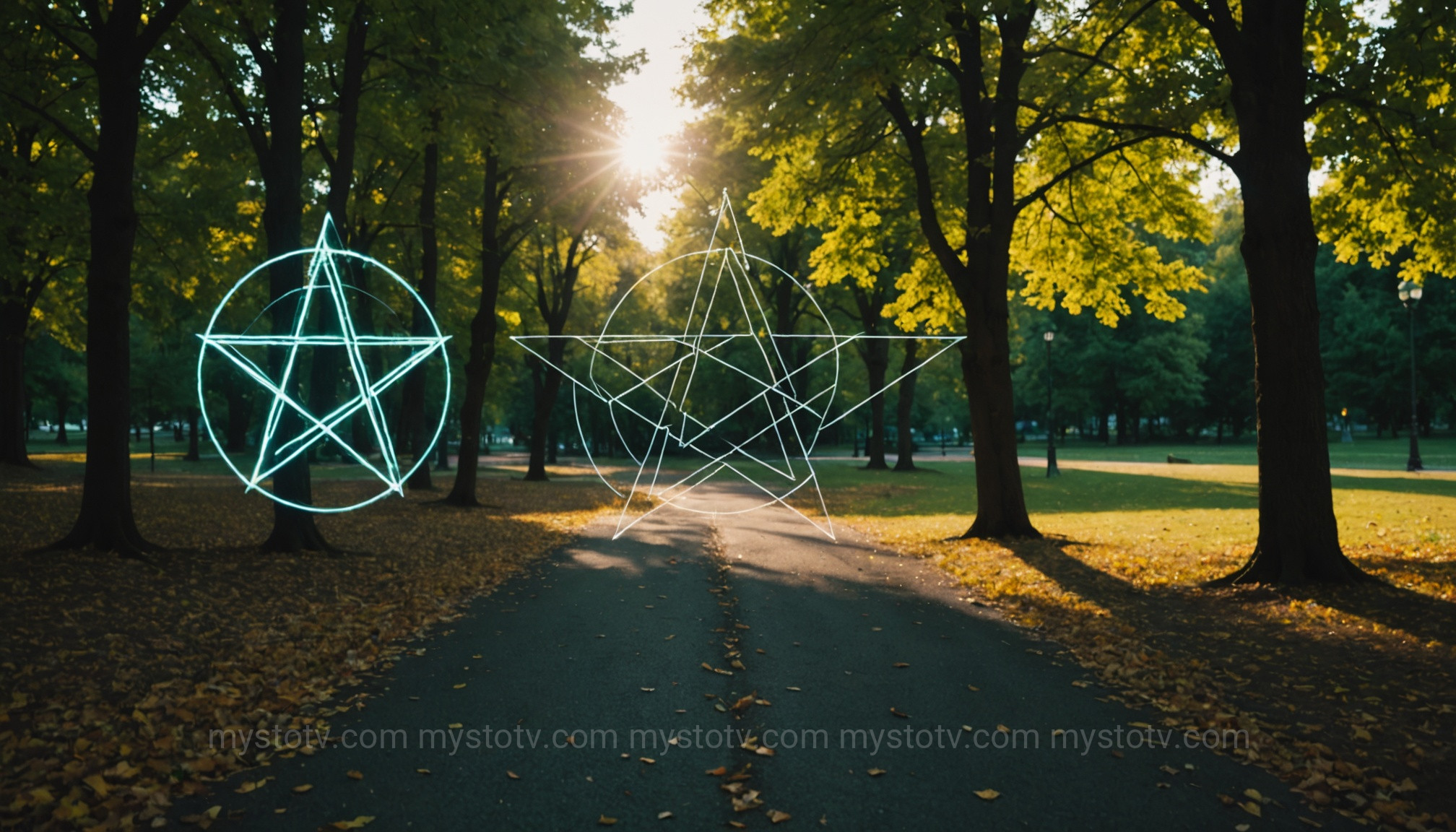I remember it clearly. It was one of those late nights spent falling down the digital rabbit hole of Google Earth, zooming in on random corners of the globe. That's when I saw it. In a desolate, remote corner of northern Kazakhstan, etched into the landscape, was a massive, near-perfect pentagram enclosed in a circle. My first reaction was a jolt of disbelief, followed by intense curiosity. Was this an ancient ritual site? A forgotten military base? For years, this giant symbol fueled wild speculation online. The mystery of the Lisakovsk pentagram became a modern legend, born from satellite imagery. But what if the sensational truth wasn't the real truth? What if the solution was far more grounded, yet equally fascinating? This is the story of how that bizarre geoglyph was finally, and definitively, solved.
Contents
- 1 The Discovery: Unearthing the Lisakovsk Pentagram on Google Earth
- 2 A Whirlwind of Theories: Decoding the Lisakovsk Pentagram
- 3 The Official Explanation: An Archaeologist Solves the Lisakovsk Pentagram Mystery
- 4 Why the Lisakovsk Pentagram Mystery Persists
- 5 Frequently Asked Questions (FAQ)
- 6 References
- 7 Conclusion: From Digital Mystery to Historical Footnote
The Discovery: Unearthing the Lisakovsk Pentagram on Google Earth

In 2013, the internet lit up with news of a strange discovery. Located on the southern shore of the Upper Tobol Reservoir, just east of the city of Lisakovsk, a giant five-pointed star measuring approximately 366 meters (1,200 feet) in diameter was plainly visible from space. First spotted by Google Earth user Kurt Yates, the symbol immediately captured the public imagination. The precision of the shape, its remote location, and its sheer scale made it an instant enigma.
The structure wasn't a faint outline; it was a clearly defined earthwork. The lines forming the star were distinct paths or trenches, and the entire figure was enclosed within a circle, another feature that added to its seemingly occult or symbolic nature. This wasn't just a trick of light and shadow. It was a man-made construction. The immediate question on everyone's mind was: who built this giant Lisakovsk pentagram, and for what purpose?
A Whirlwind of Theories: Decoding the Lisakovsk Pentagram
As with any good mystery in the digital age, speculation ran rampant. The visual power of a pentagram is undeniable, and its association with various belief systems fueled a firestorm of theories, ranging from the plausible to the utterly fantastic. Analyzing these theories reveals more about our own cultural interpretations than about the structure itself.
Satanic Rituals and Occult Connections?
The most popular and sensational theory was, of course, that the Lisakovsk pentagram was a site for satanic worship or black magic rituals. The pentagram is a potent symbol, and in modern Western culture, it is often incorrectly associated exclusively with nefarious cults. Commentators online imagined dark-robed figures performing ceremonies under the vast Kazakhstan sky. This theory, while thrilling, lacked any shred of evidence beyond the shape of the symbol itself. There were no historical accounts, no archaeological findings of ritual activity, and no local legends to support such a claim. It was an interpretation based entirely on a modern pop-culture understanding of the symbol.
Ancient Geoglyph or Alien Landing Pad?
Another school of thought tried to connect the Lisakovsk pentagram to ancient geoglyphs like the Nazca Lines in Peru. Proponents suggested it could be a forgotten symbol from a lost civilization, perhaps with astronomical significance. Others, pointing to its geometric perfection, posited a more out-of-this-world explanation: an alien landing pad or a marker for extraterrestrial visitors. While the idea of an ancient geoglyph has some archaeological precedent elsewhere in the world, the sharpness of the lines and its location near a modern city made a prehistoric origin seem unlikely. The alien theory, as is often the case, was pure speculation born from the "unexplained" nature of the object.
A Forgotten Soviet Military Site?
A more grounded theory suggested the Lisakovsk pentagram was a relic of the Cold War. Kazakhstan was part of the Soviet Union, a regime known for its monumental architecture and secretive military installations. Some speculated it could be the outline of a surface-to-air missile launch site, an abandoned antenna array, or some kind of military test range. The five-pointed star was a prominent symbol of the USSR, lending this theory a degree of plausibility that the occult explanations lacked. This was getting warmer, but it still missed the mark on the site's actual purpose.
The Official Explanation: An Archaeologist Solves the Lisakovsk Pentagram Mystery

While the world was busy speculating about demons and aliens, the real answer came from a far more credible source: archaeology. The solution to the Lisakovsk pentagram mystery was provided by Dr. Emma Usmanova, an archaeologist with decades of experience working in the region with the Karaganda State University's "Saryarka Archaeological Institute". Her explanation was simple, logical, and backed by direct knowledge of the site.
Introducing Dr. Emma Usmanova and Her Research
Dr. Usmanova was well-acquainted with the area shown on Google Earth. When news of the "satanic pentagram" reached the archaeological community, she quickly clarified the situation. In an interview with Live Science in 2013, she expressed amusement at the wild theories. "It is the outline of a park made in the form of a star," she stated plainly. This wasn't a recent discovery for her or her team; it was a known local landmark from a specific historical period.
Not a Pentagram, But a Soviet-Era Park
The truth is that the Lisakovsk pentagram is not a pentagram at all; it's a five-pointed star. And it's not ancient or occult. It is the layout of a park built during the Soviet era. The star, or penta-alpha, was one of the most important symbols of the Soviet Union, representing the five points of the communist ideology and appearing on its flag, emblems, and architecture. The park was designed as a patriotic landmark, a place for recreation surrounded by national symbolism.
What appears as trenches or channels on the satellite image are, in reality, the park's walking paths. The park was constructed in the 1970s, and over the decades, the tree-lined avenues have grown, making the star shape even more prominent from an aerial perspective. What conspiracy theorists interpreted as sinister ritual lines were simply meant for leisurely strolls.
An Archaeological Analysis of the Lisakovsk Pentagram's Features
A closer look at the "geoglyph" with this new context makes everything fall into place. The "rays" of the Lisakovsk pentagram are clearly delineated paths, now somewhat decayed but still visible. The surrounding "circle" is a road that encloses the park. Other faint lines seen in satellite imagery correspond to access roads and other landscaping features that have fallen into disuse. The park's construction method—digging out paths and planting trees along them—is what gives it the "etched into the earth" appearance from thousands of feet in the air. It's a testament to how perspective can dramatically alter our interpretation of an object.
Why the Lisakovsk Pentagram Mystery Persists

Even with a clear and authoritative explanation, a quick search online today shows that the mystery of the Lisakovsk pentagram is far from dead. Why do the occult and alien theories continue to circulate years after the case was solved? The answer lies in human psychology and the nature of online information. The whirlwind of theories about the Lisakovsk pentagram often proves more compelling than the simple truth.
The Power of Visuals and Pareidolia
The human brain is hardwired to find patterns, a phenomenon known as pareidolia. We see faces in clouds and animals in rock formations. A giant, geometrically precise star is an incredibly powerful visual. Once the mind labels it a "pentagram," it automatically attaches all the cultural baggage associated with that word. The visual evidence is so striking that it can feel more real than a mundane explanation. The image of a "satanic symbol" is simply more memorable and shareable than the image of a "Soviet park layout."
The Appeal of a Grand Conspiracy over a Mundane Truth
Ultimately, the story of an ancient evil cult or an alien marker is just better than the story of a 1970s public park. People are often drawn to narratives that suggest a hidden, more exciting reality lies just beneath the surface of our own. A grand conspiracy provides a sense of special knowledge and makes the world feel more magical and mysterious. The simple, logical truth, while accurate, can feel disappointingly ordinary. The persistence of the Lisakovsk pentagram myth is a perfect case study in our collective preference for a good story over a simple fact.
Frequently Asked Questions (FAQ)
Here are answers to some common questions that arise about the Lisakovsk star park.
1. Is the Lisakovsk pentagram still visible on Google Earth?
Yes, absolutely. As of the latest satellite imagery, the star-shaped park is still clearly visible on Google Earth and other mapping services. You can find it by searching for the coordinates 52°28'47"N 62°11'08"E. Over time, the trees have grown and the paths have weathered, but the iconic shape of the star remains unmistakable from an aerial view.
2. Why was a park built in the shape of a star?
The five-pointed red star was a primary ideological and military symbol of the Soviet Union. It represented the five pillars of communist society (workers, youth, peasants, military, and scholars) and the five continents. Constructing buildings, monuments, and even parks in the shape of a star was a common form of propaganda and a way to instill patriotic pride during the USSR era. The Lisakovsk pentagram, or star, is just one of many such examples across the former Soviet bloc.
3. Who is Emma Usmanova, the archaeologist who solved the mystery?
Dr. Emma Usmanova is a senior archaeologist from Karaganda State University in Kazakhstan. She has spent her career studying the archaeology of the Lisakovsk region, focusing on Bronze Age sites and burial grounds. Her intimate knowledge of the area's history, both ancient and modern, made her the perfect person to debunk the fantastical theories. Her quick and no-nonsense explanation, published in reputable sources, provided the definitive solution to the mystery.
References
- Usmanova, E. (2013, August 9). As quoted in "Kazakhstan's 'Satanic Pentagram' Explained." Live Science.
- Pappas, S. (2013, August 2). "Mysterious Pentagram in Kazakhstan Baffles Scientists." Live Science.
Conclusion: From Digital Mystery to Historical Footnote
The journey of the Lisakovsk pentagram is a thoroughly modern tale. A mystery born on a computer screen, fueled by a global network of curious minds, and ultimately solved by a local expert with real-world knowledge. It serves as a fascinating reminder that in an age of endless information, perspective is everything. What one person sees as a sinister symbol, another recognizes as a walk in the park—literally. The star of Lisakovsk is not a gateway to another dimension or a remnant of a dark cult; it is a decaying artifact of a 20th-century political ideology. While the mystery has been solved, the story of the Lisakovsk pentagram endures as a powerful example of how easily we can be captivated by a good story, and how satellite technology continues to uncover the strange and wonderful footnotes of human history.